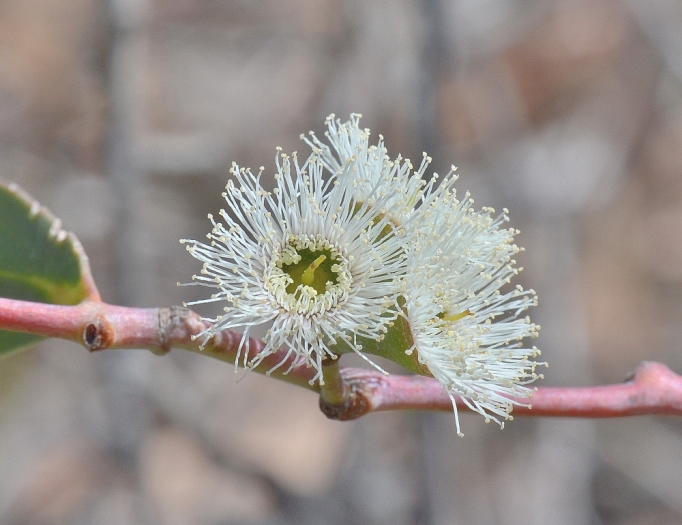Silver Peppermint
(Eucalyptus tenuiramis)
Silver Peppermint (Eucalyptus tenuiramis)
/
/

© James (Jim) Duggan
CC BY-SA 4.0
Image By:
© James (Jim) Duggan
Recorded By:
Copyright:
CC BY-SA 4.0
Copyright Notice:
Photo by: © James (Jim) Duggan | License Type: CC BY-SA 4.0 | License URL: http://creativecommons.org/licenses/by-sa/4.0/ | Uploader: tas56 | Publisher: iNaturalist |

























Estimated Native Range
Summary
Eucalyptus tenuiramis, commonly known as Silver Peppermint, is a small to medium-sized evergreen tree endemic to Tasmania, specifically the southeastern region, including the Derwent River valley. It thrives in open eucalypt forests and woodlands, often on hillsides and occasionally in riparian zones. This species typically reaches up to 82 feet (25 meters) in height and is characterized by its smooth, white to light grey bark that peels in ribbons. The leaves emit a peppermint scent when crushed, and the tree produces white flowers during the summer months, which are attractive to bees and other pollinators.
Silver Peppermint is valued for its fast growth rate, attractive bark, and aromatic foliage. It is used for ornamental purposes, windbreaks, and as a source of essential oils. In cultivation, it prefers well-drained soils, tolerates a range of soil types, and requires full sun to part shade. While it is drought-tolerant once established, young trees benefit from regular watering. It is not commonly affected by diseases but can be susceptible to pests like the eucalyptus longhorned borer. Due to its potential invasiveness, it should not be planted where it can spread into native ecosystems.CC BY-SA 4.0
Silver Peppermint is valued for its fast growth rate, attractive bark, and aromatic foliage. It is used for ornamental purposes, windbreaks, and as a source of essential oils. In cultivation, it prefers well-drained soils, tolerates a range of soil types, and requires full sun to part shade. While it is drought-tolerant once established, young trees benefit from regular watering. It is not commonly affected by diseases but can be susceptible to pests like the eucalyptus longhorned borer. Due to its potential invasiveness, it should not be planted where it can spread into native ecosystems.CC BY-SA 4.0
Plant Description
- Plant Type: Tree
- Height: 20-60 feet
- Width: 20-60 feet
- Growth Rate: Rapid
- Flower Color: White
- Flowering Season: Summer
- Leaf Retention: Evergreen
Growth Requirements
- Sun: Full Sun
- Water: Medium
- Drainage: Fast, Medium
Common Uses
Drought Tolerant, Erosion Control
Natural Habitat
Endemic to open eucalypt forests and woodlands, often on hillsides and occasionally in riparian zones within southeastern Tasmania
Other Names
Common Names: Mealy Peppermint
Scientific Names: , Eucalyptus tenuiramis,
GBIF Accepted Name: